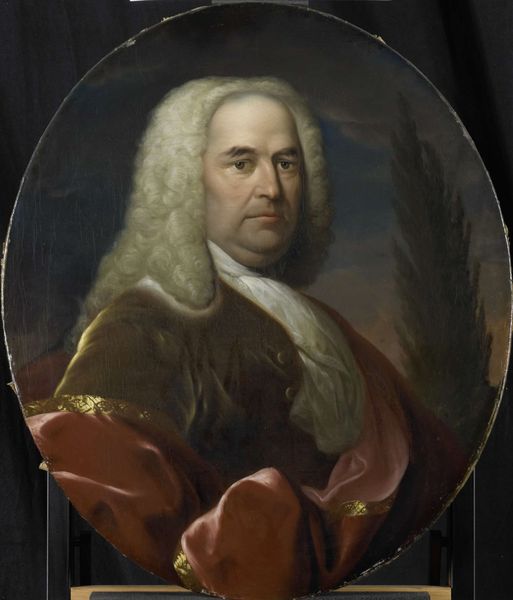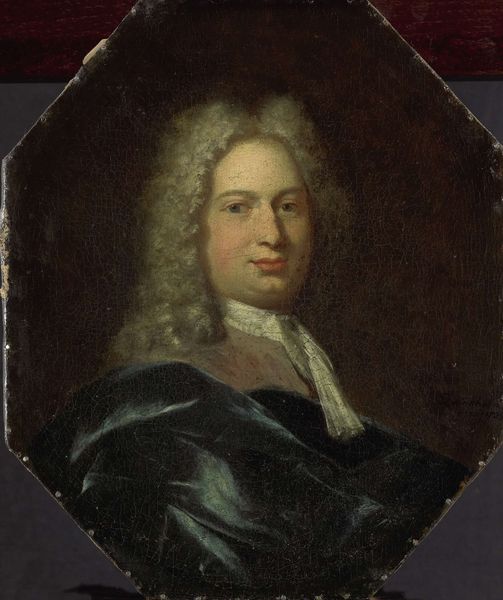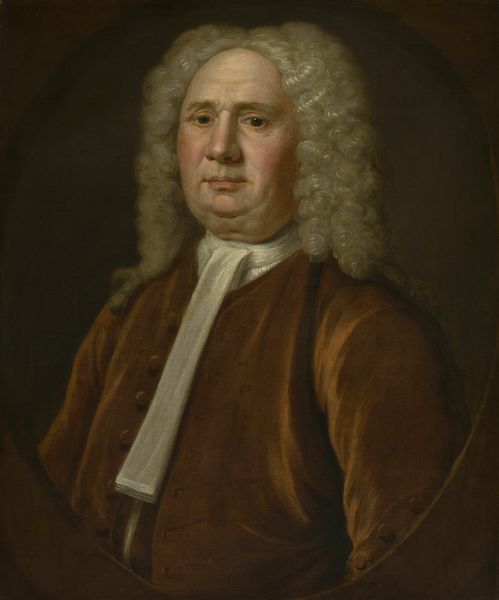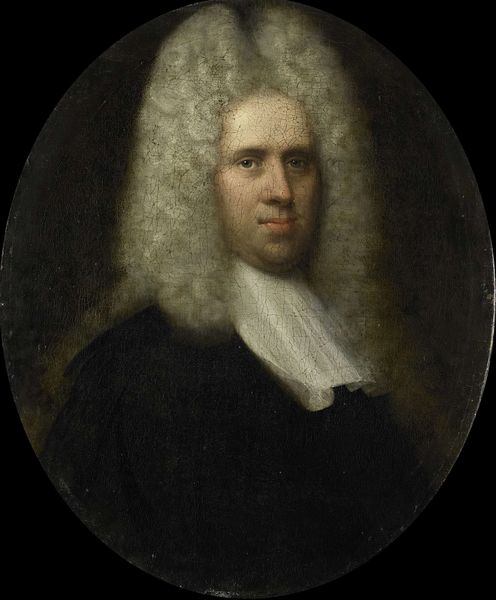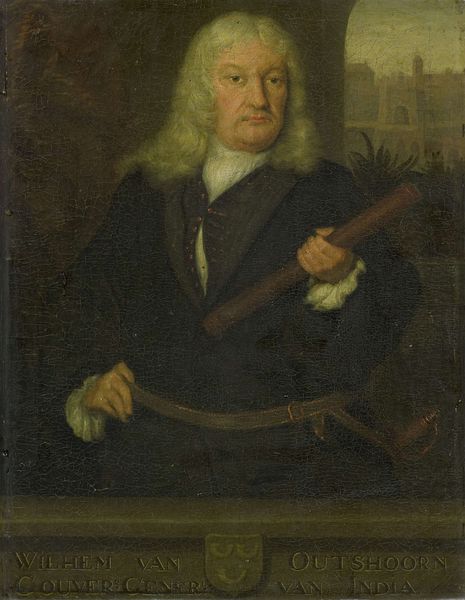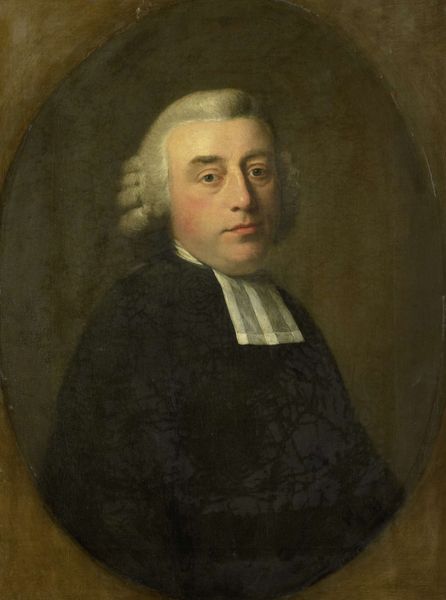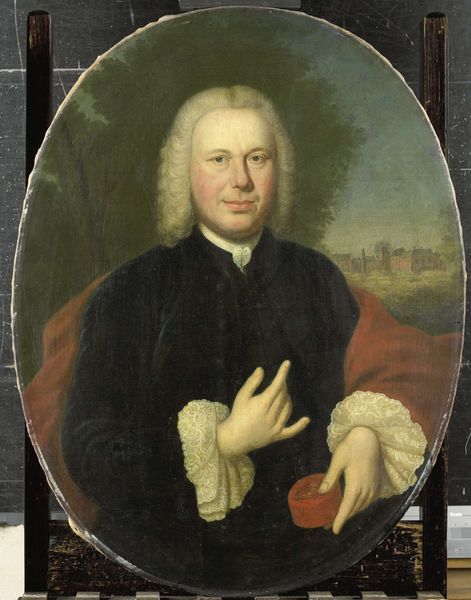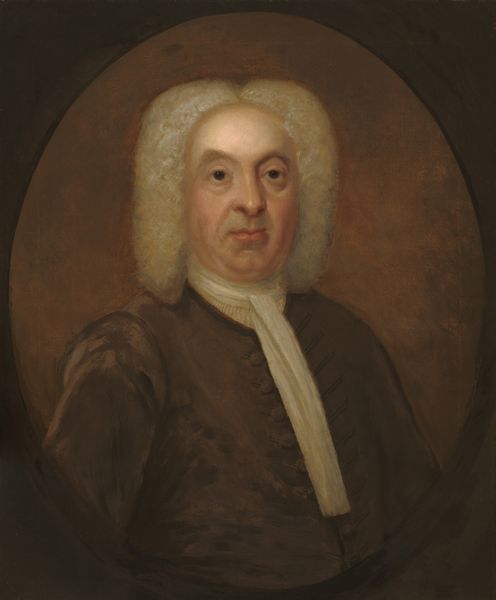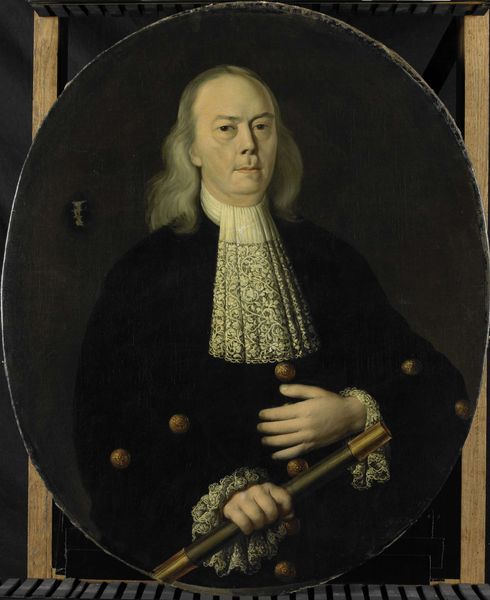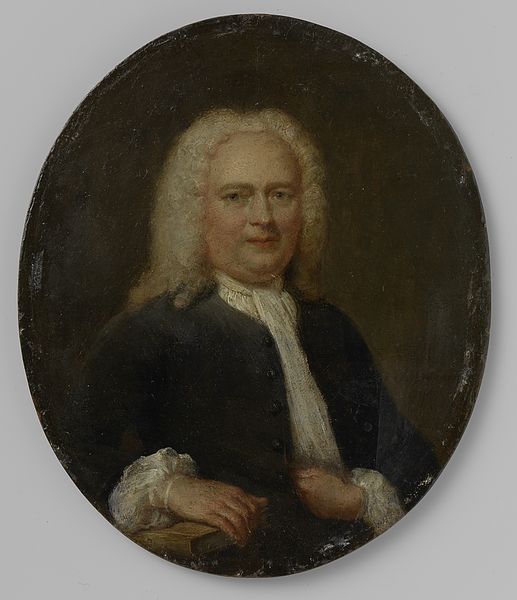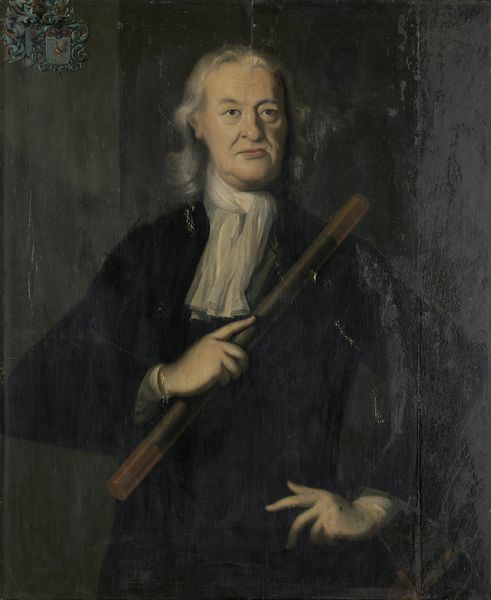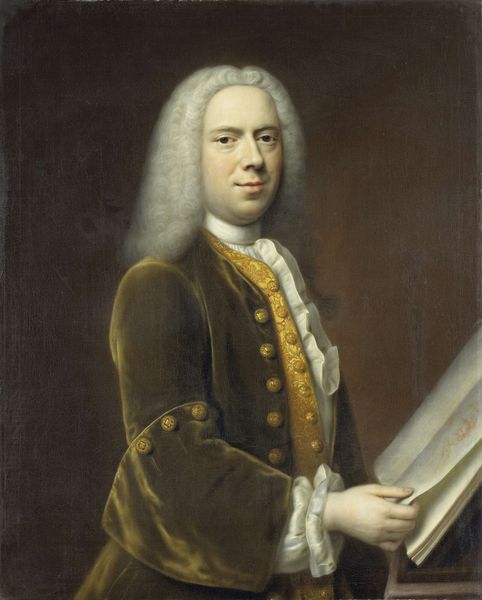
Portrait of Adriaen Paets, Director of the Rotterdam Chamber of the Dutch East India Company, elected 1734 1734 - 1765
0:00
0:00
painting, oil-paint
#
portrait
#
baroque
#
painting
#
oil-paint
#
genre-painting
#
history-painting
Dimensions: height 82 cm, width 68 cm
Copyright: Rijks Museum: Open Domain
Curator: This is a portrait of Adriaen Paets, a director of the Rotterdam Chamber of the Dutch East India Company, elected in 1734. Painted between 1734 and 1765, the work is attributed to Dionys van Nijmegen, rendered in oil. Editor: The first thing I see? An enormous white wig – like a cloud threatening to envelop him. He has the knowing eyes of someone very important but also slightly amused about his importance. It is a nice image! Curator: Absolutely, and the wig itself is a potent symbol. These elaborate wigs were de rigueur for men of status and power during this era. Paets is making a clear statement about his position in society. I also think it's worth unpacking how his position intersects with the broader context of the Dutch East India Company. Editor: Oh, you are correct! The very entity this man presided over was, you know, deeply embedded in colonial exploitation, wasn’t it? The spice trade fueled by the, shall we say, "extraction" of resources and labor from the East. Now, his calm, almost self-satisfied expression takes on a whole new dimension of that time period! Curator: Precisely! So, is this a straightforward portrait, or does it hint at something more unsettling? It seems important to really critically examine his place within the network of Dutch colonialism, capitalism and also, gender as well as how they mutually informed each other. Editor: Right! Because all that wealth came at an unthinkable cost, didn't it? Perhaps the artist subtly conveyed some of that complexity, or perhaps, Paets was just proud of the money he earned, plain and simple. He is also wearing all black except for the white wig. Was black en vogue, or a moral stance perhaps? The position of the hand also tells of great consideration or is that for holding his gloves, who knows? Curator: Van Nijmegen provides us with access to a network of wealth and status, as well as the ideologies that supported these powerful figures like Paets and also institutions of the period, particularly pertaining to capitalism. Editor: I appreciate that! To me, I appreciate it for being what it is and making me look past face value to ponder on important events in our social make-up as societies.
Comments
No comments
Be the first to comment and join the conversation on the ultimate creative platform.
